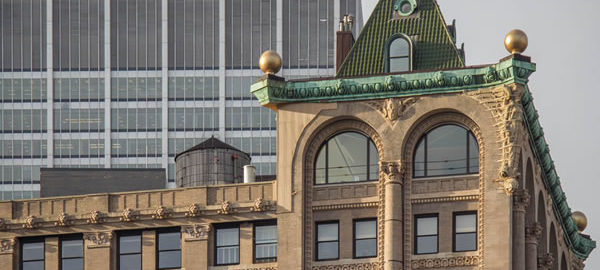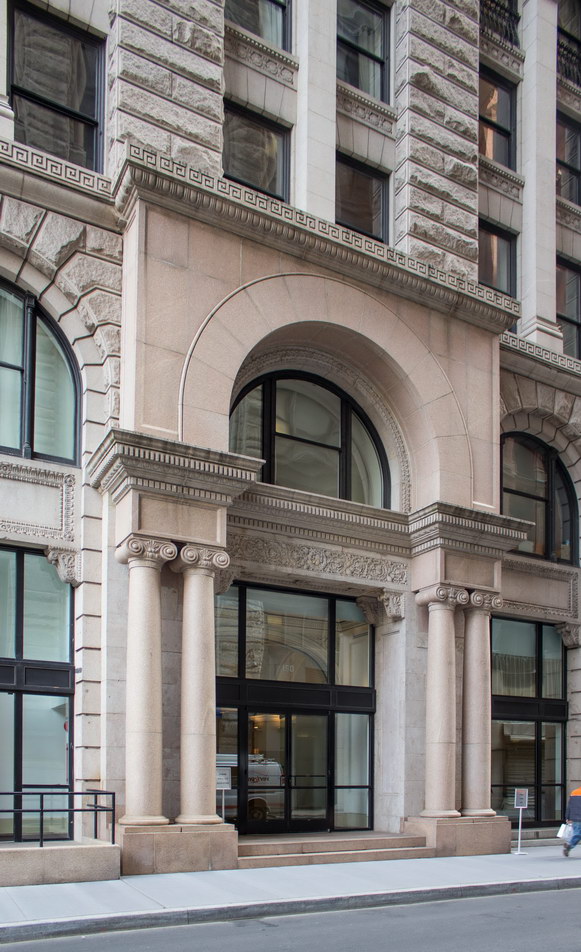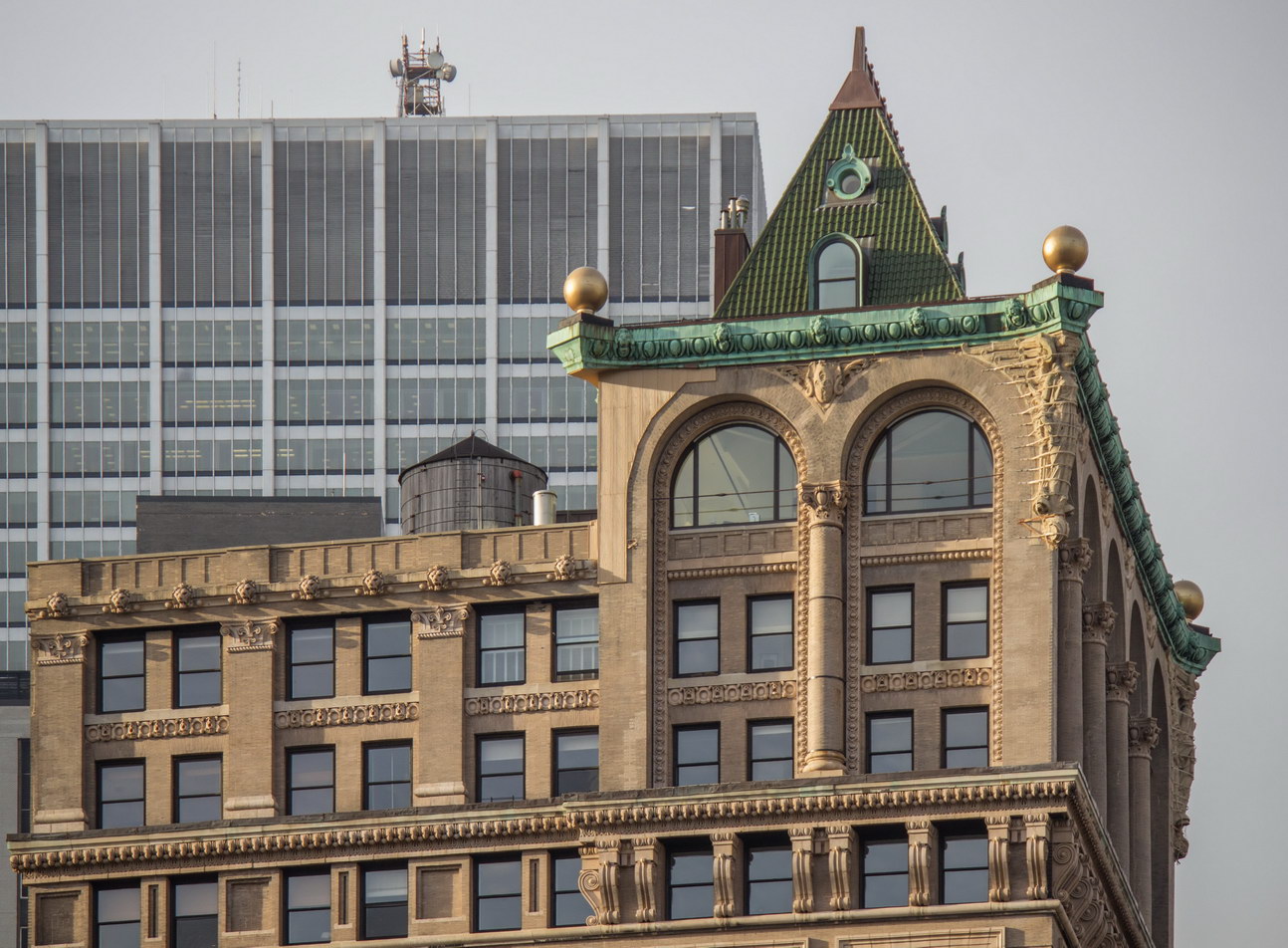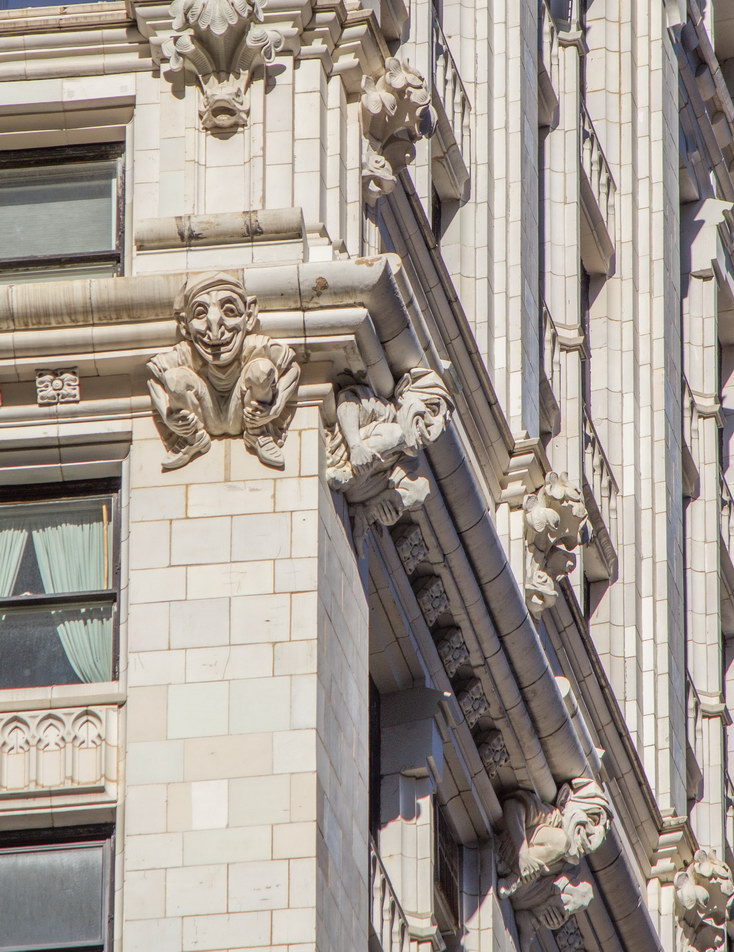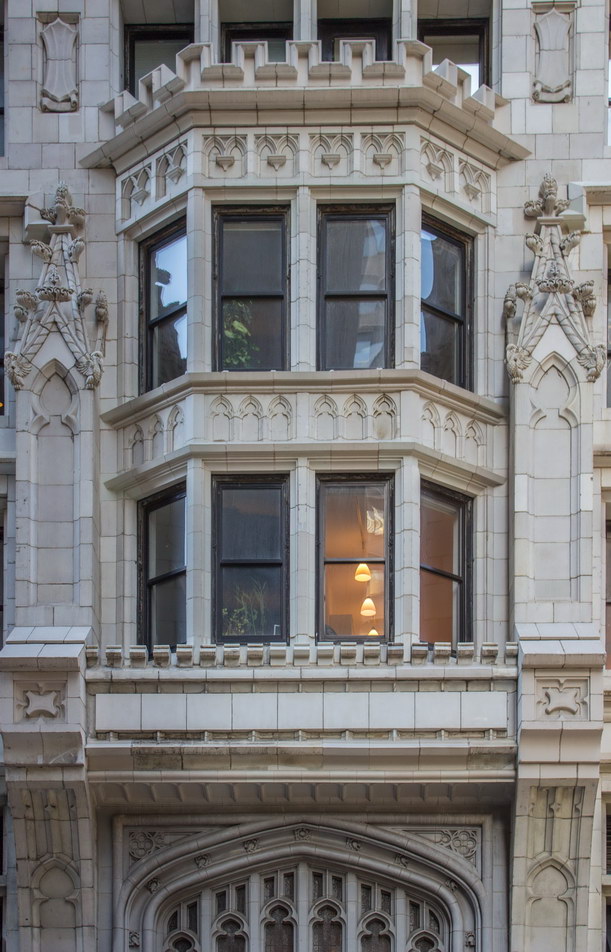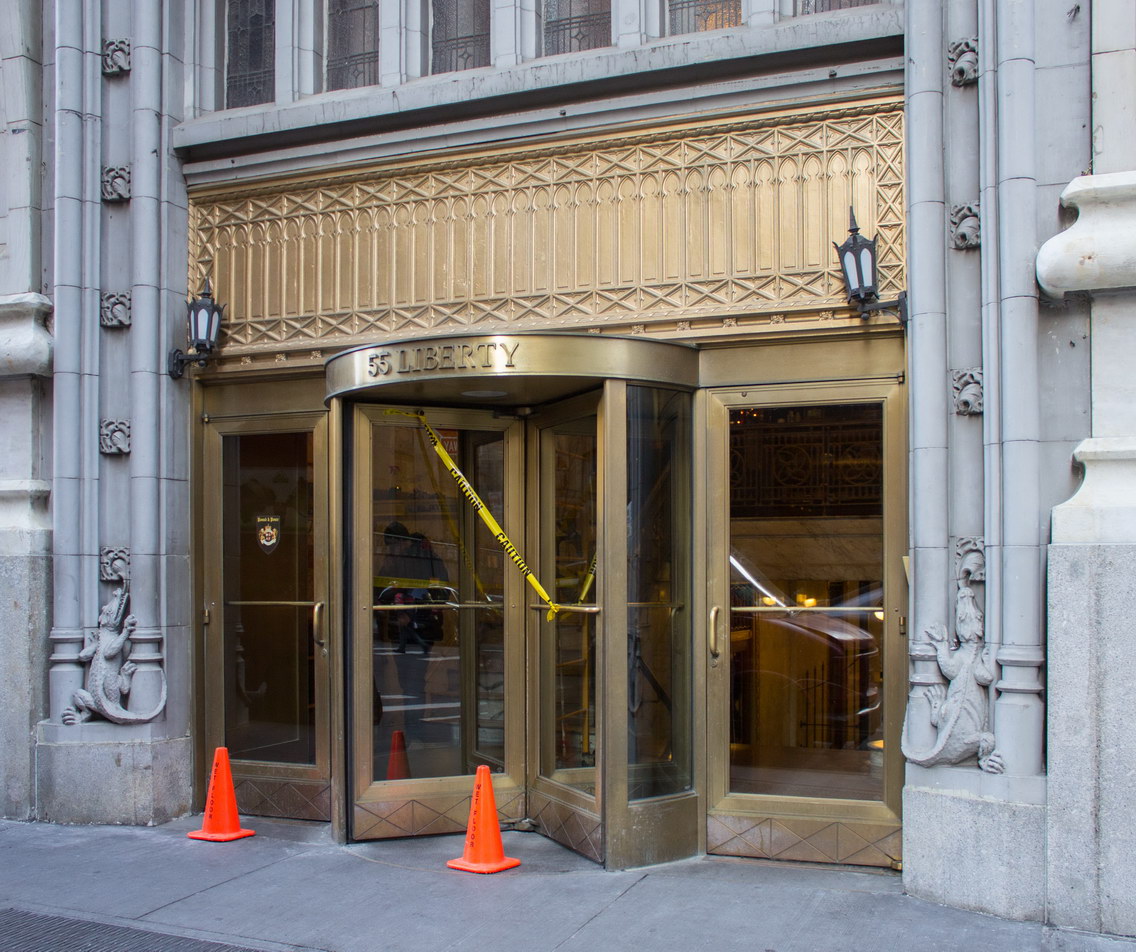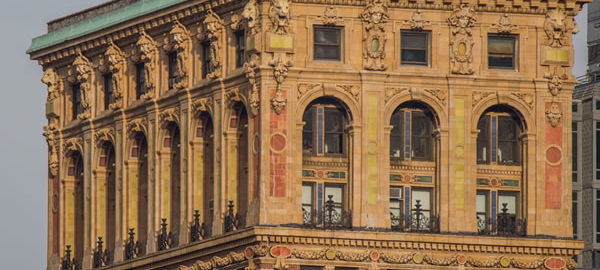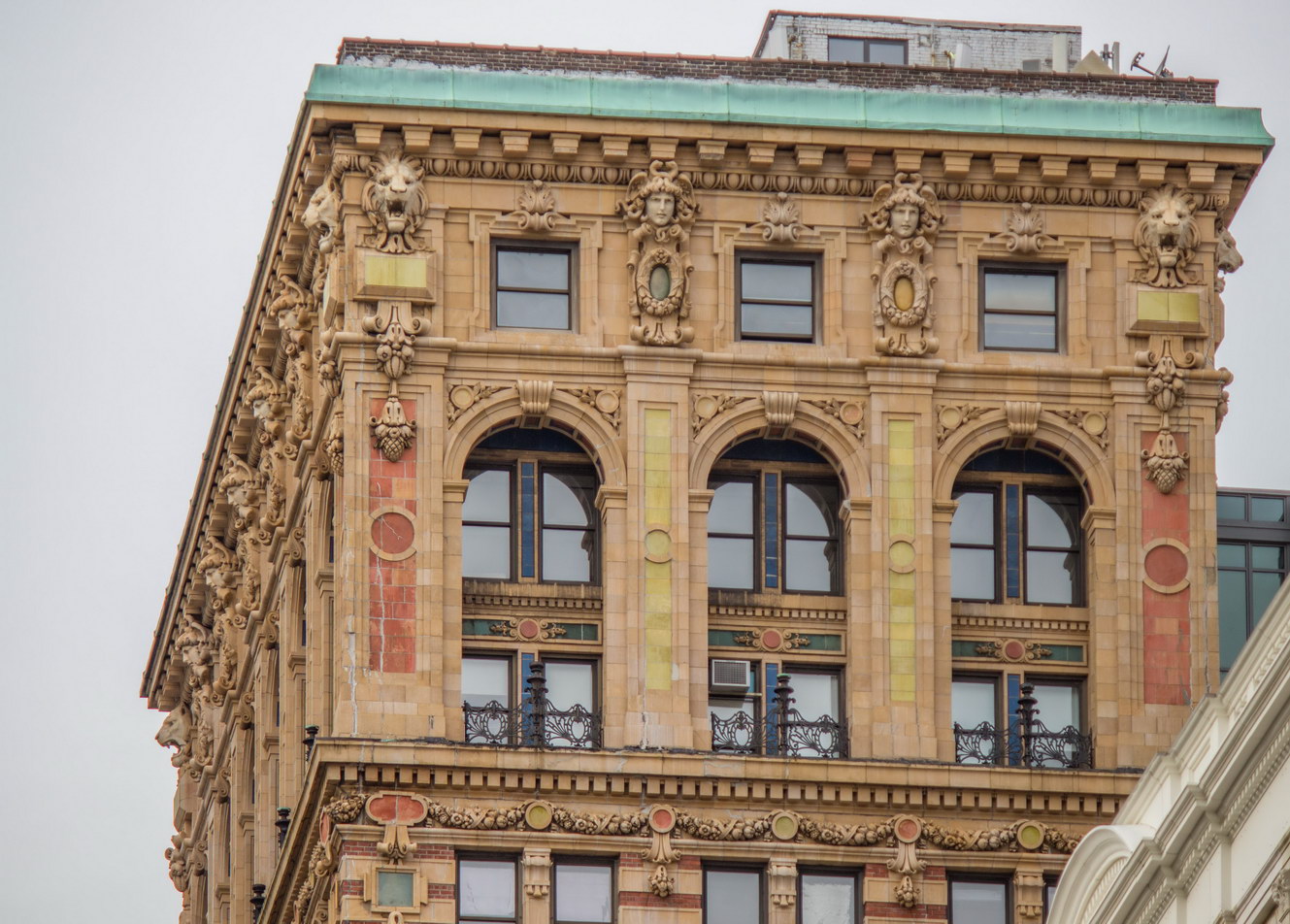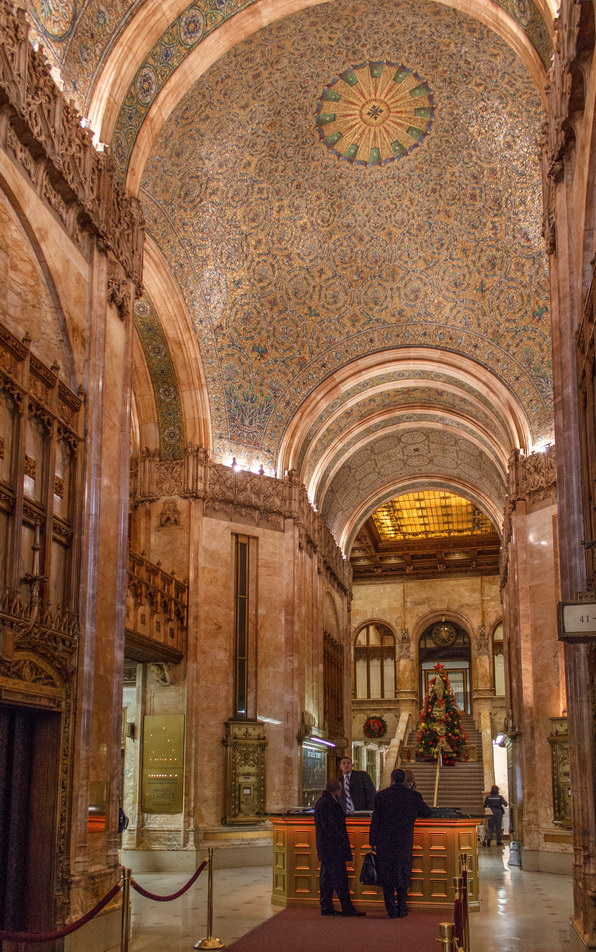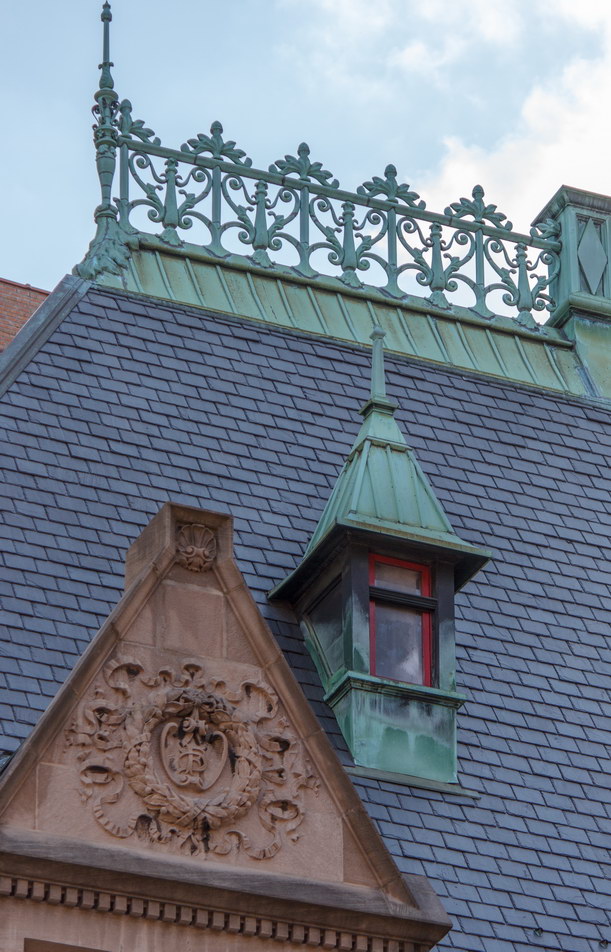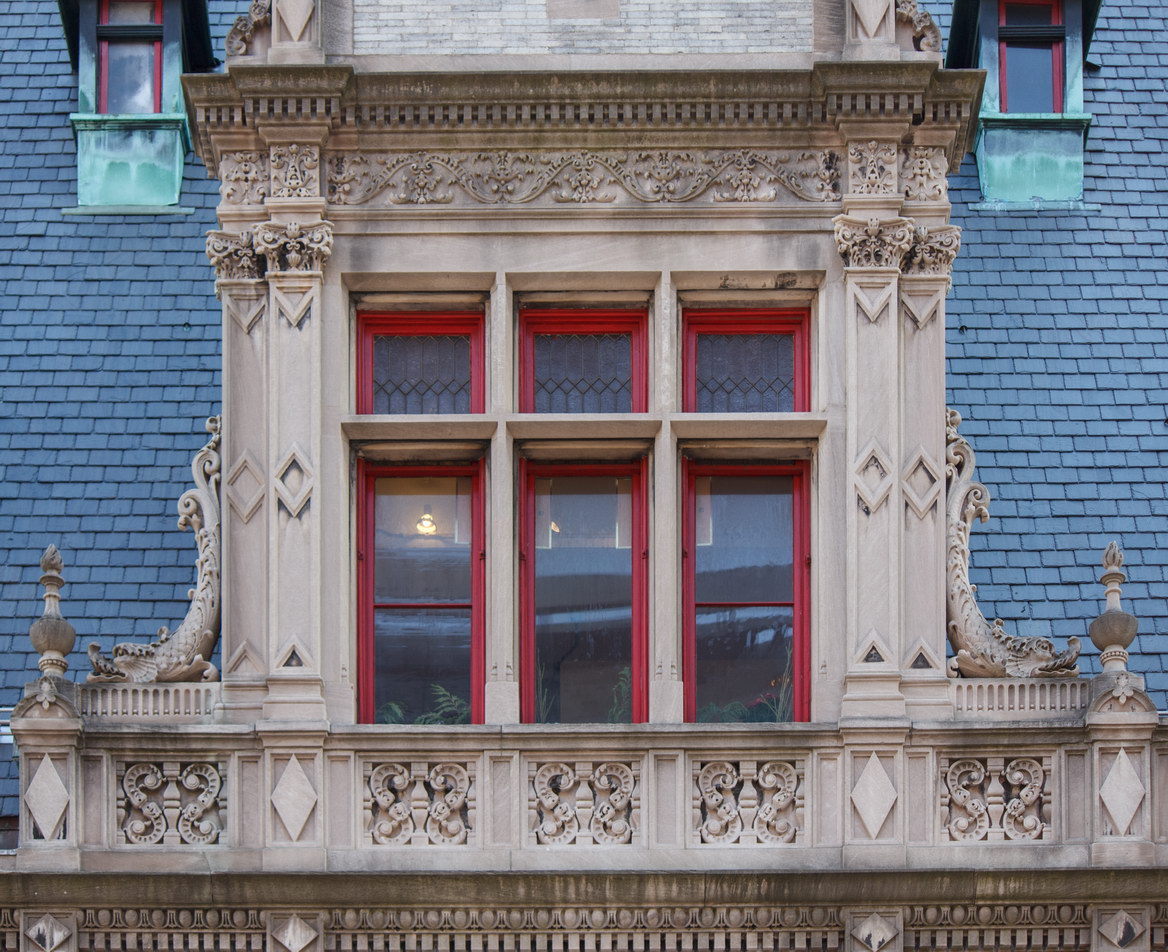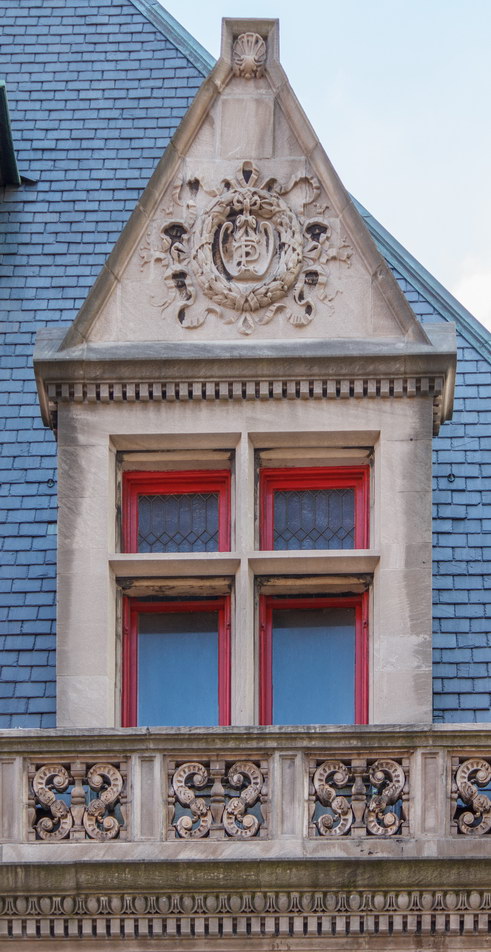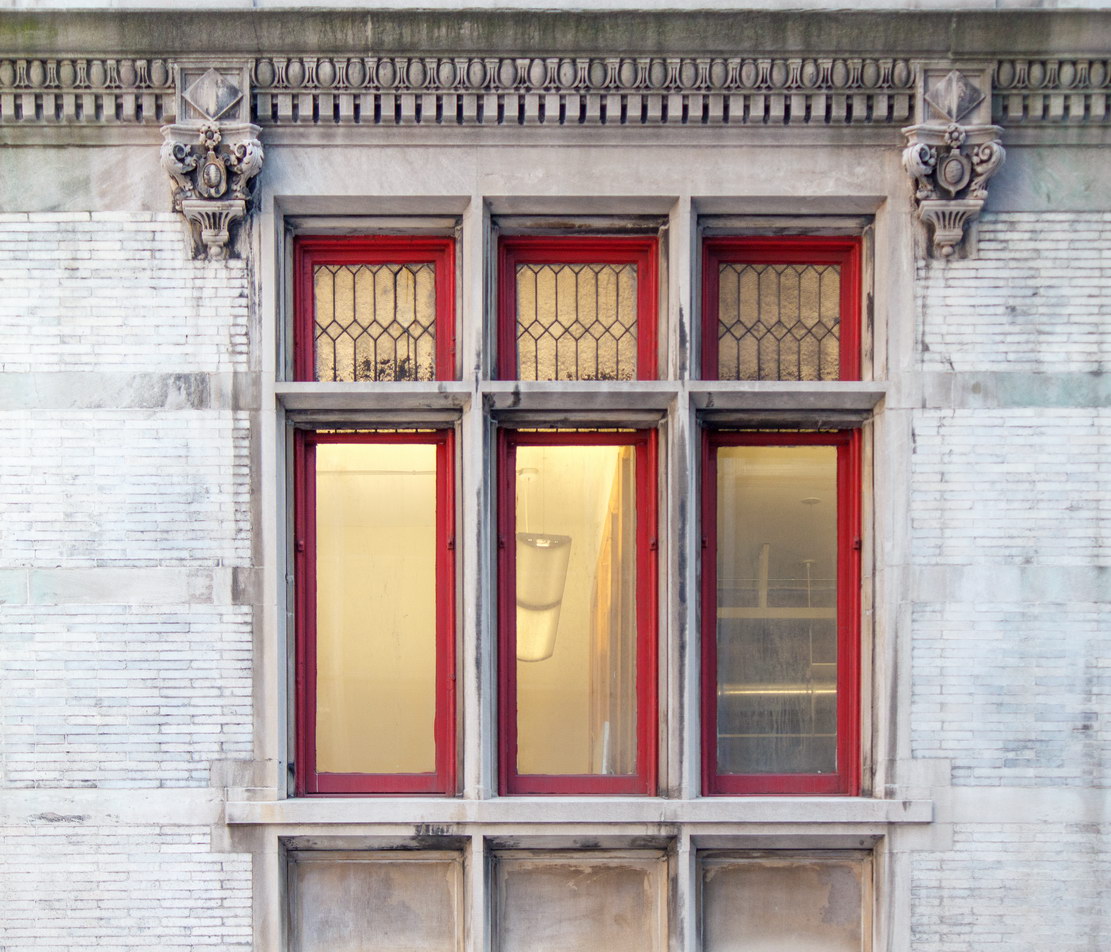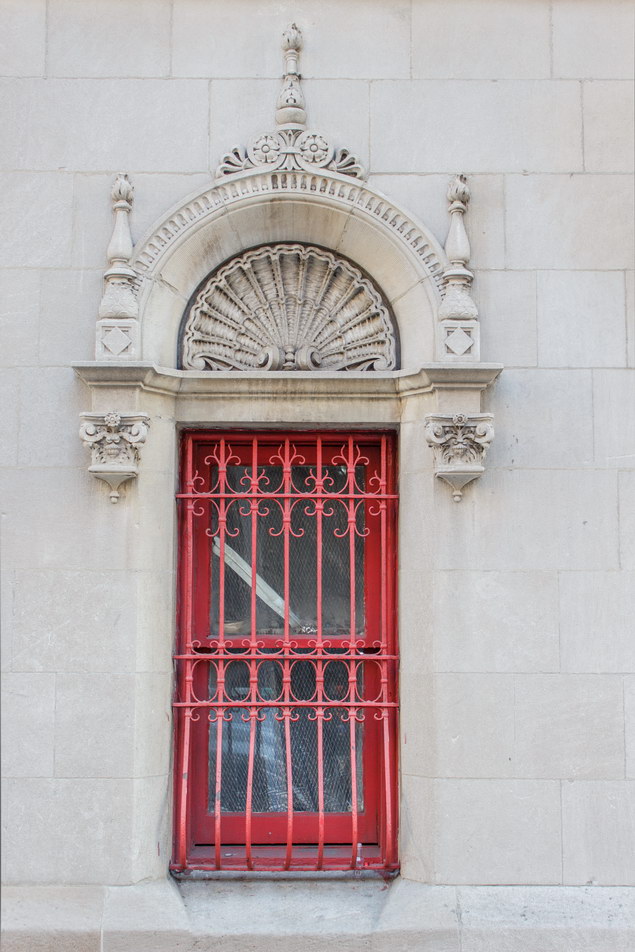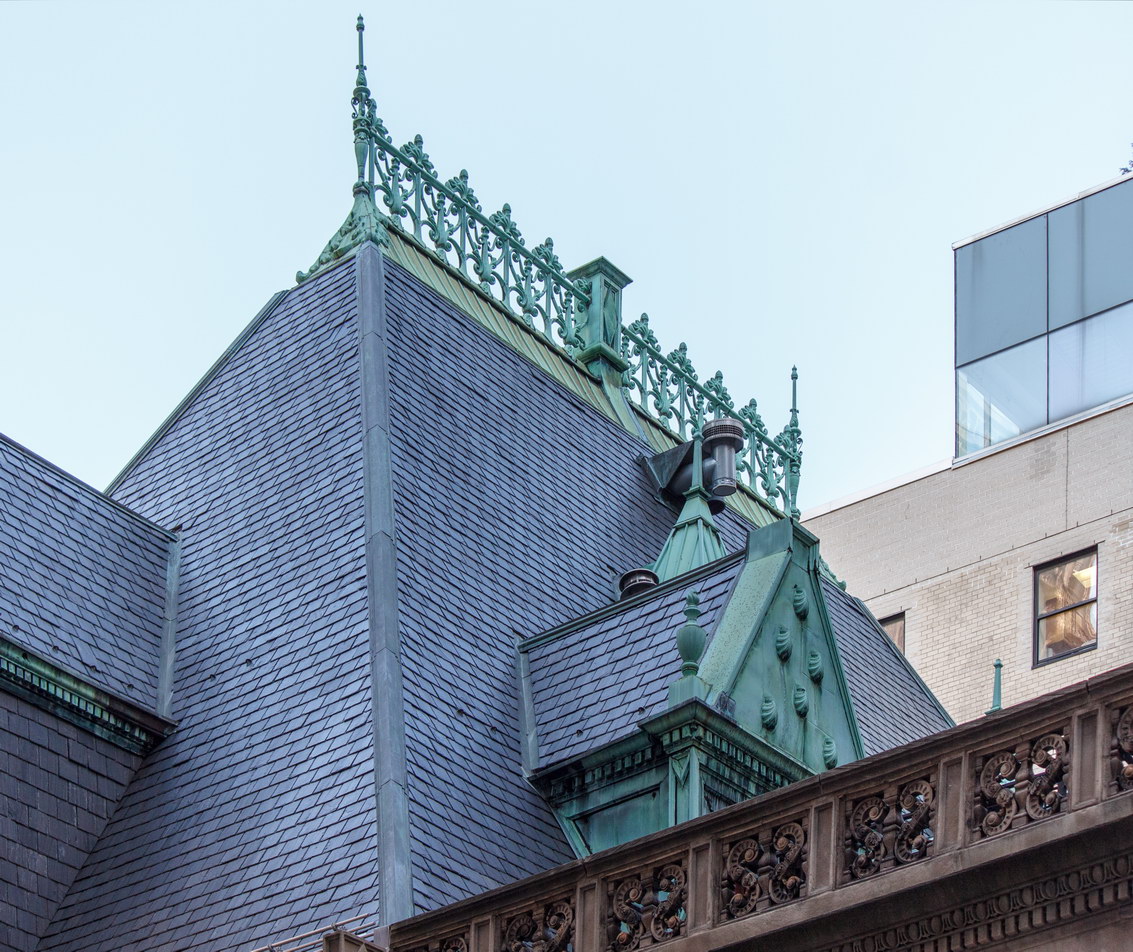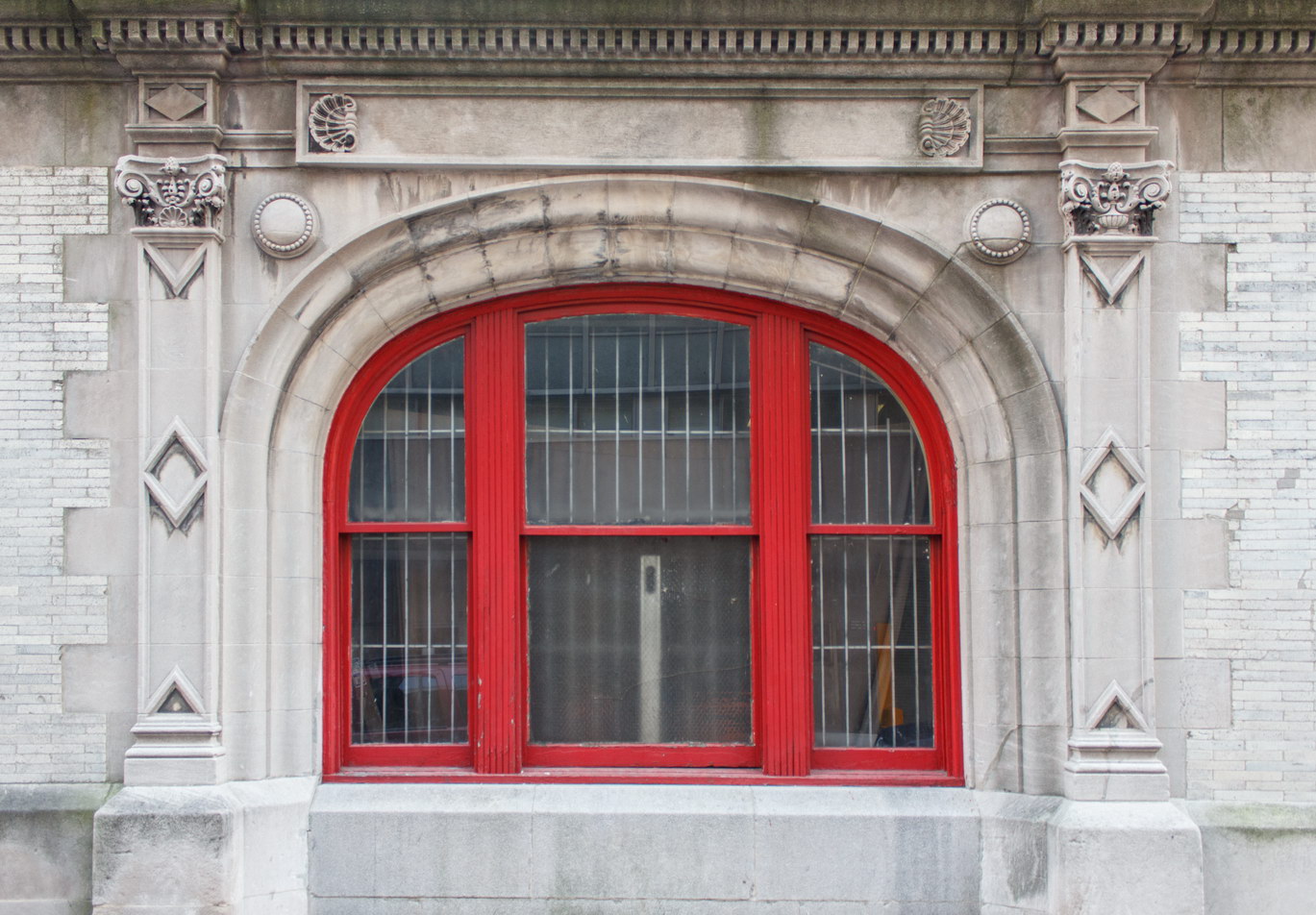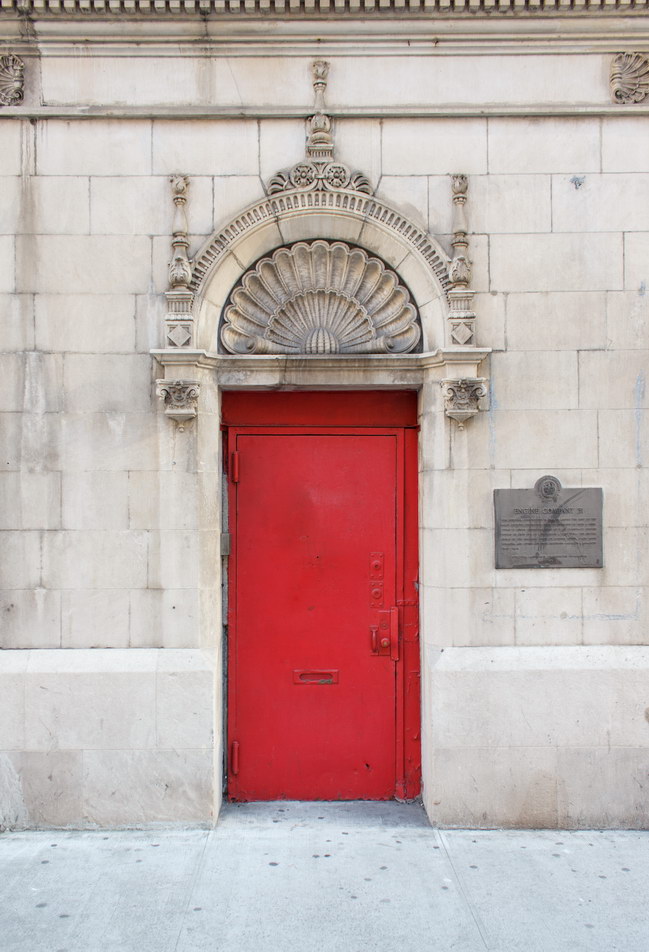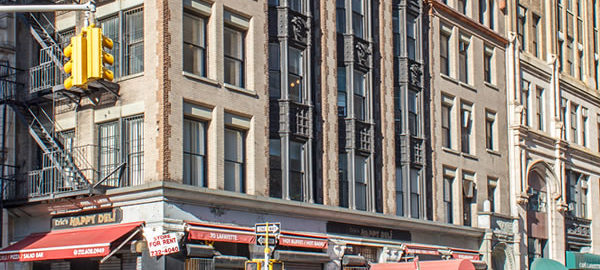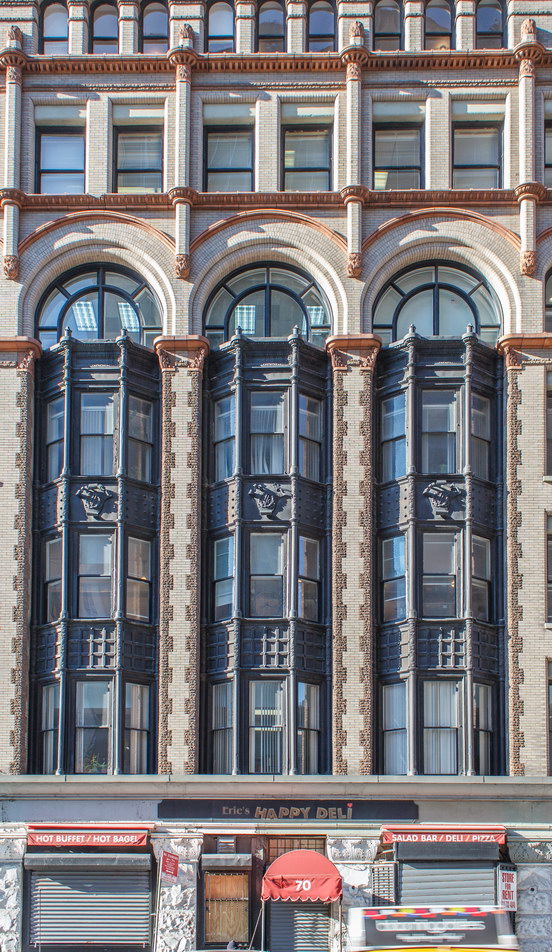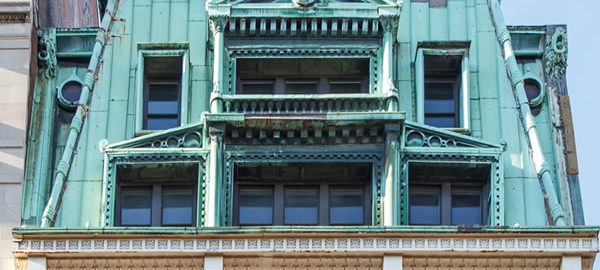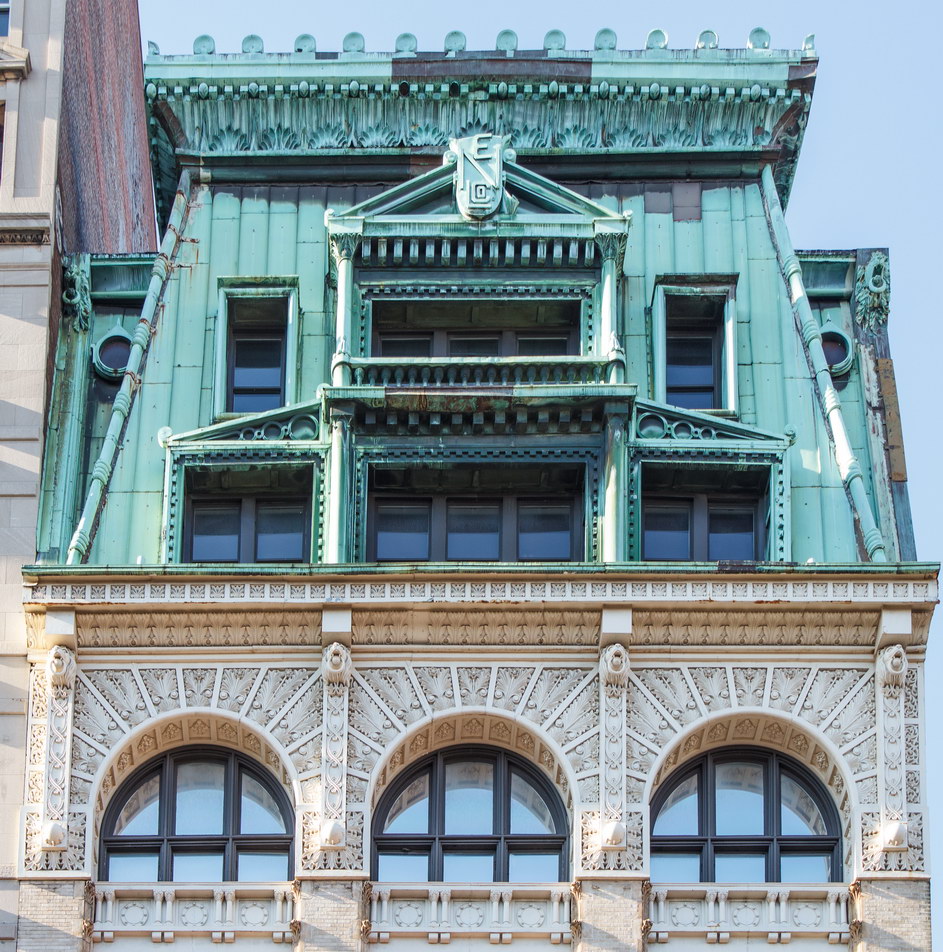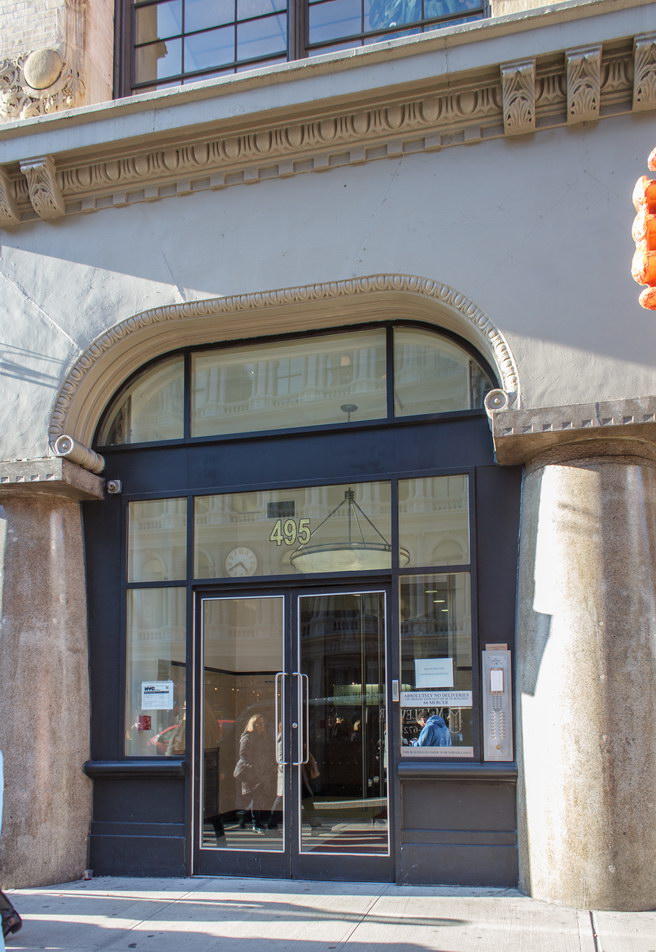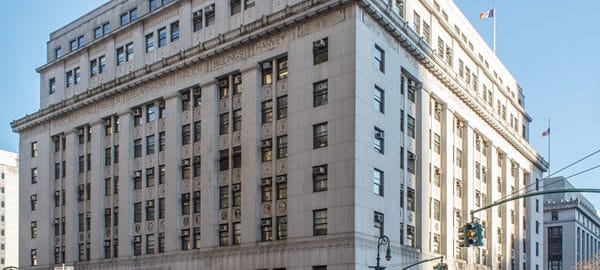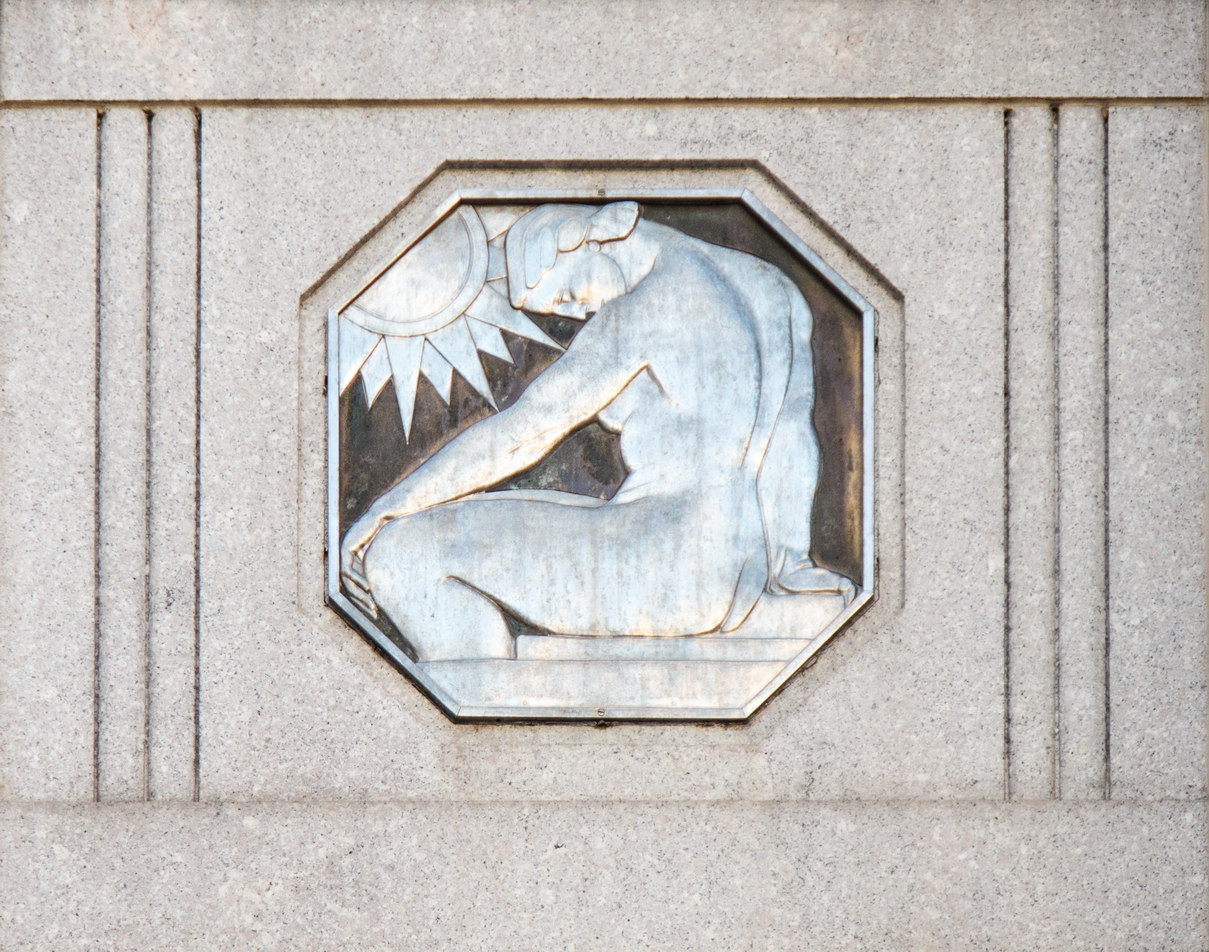If you don’t like the American Tract Society Building, blame the sinners of 1824 New York. The building is here because the ATS’ Rev. William Allen Hallock believed that the religious publisher should be headquartered where it is needed most – in “the great wicked city of New York.”
Fast forward to 1894: The ATS decided to erect an office building on their land, as an investment. They chose Robert H. Robertson – prominent for his churches and religious institutions – to design the building.
Like his later Park Row Building (15 Park Row, completed 1899), the American Tract Society Building mixes styles: Romanesque and Renaissance Revival. This structure also mixes construction types: the facades are part self-supporting masonry, part curtain wall.
When completed, the American Tract Society Building was among New York’s tallest structures – tallest, by full floor count (20). But Robertson, who did not really like tall buildings, designed this one in layers that de-emphasized the structure’s height.
Alas, the building had more than its share of bad luck. For starters, during construction a plasterer’s assistant fell 14 stories to his death. ATS declined to help the worker’s family despite the glare of publicity – even banning an alms box on the site. In the first year of operations, three elevator accidents injured passengers. Then in 1897 another elevator dropped 19 floors, killing two people.
The elevator accidents contributed to poor rental performance, and by 1913 ATS was unable to meet the mortgage. Mortgage holder New York Life Insurance Company resold the building in late 1919, but it was in default again by the end of 1936. The building has changed hands several times since – including a 15-year span under Pace University, which owns two neighboring buildings. The American Tract Society Building is now a residential building, except for retail space on the ground floors (the lot slopes steeply toward the east so that the basement level is exposed in the rear).
The elevators appear to have been totally replaced.
American Tract Society Building Vital Statistics
- Location: 150 Nassau Street at Spruce Street
- Year completed: 1895
- Architect: Robert H. Robertson
- Floors: 23
- Style: Romanesque and Renaissance Revival
- New York City Landmark: 1999
- National Register of Historic Places:
American Tract Society Building Suggested Reading
- Wikipedia entry
- NYC Landmarks Preservation Commission designation report
- “Manhattan Skyscrapers” abstract
- “Manhattan Skyscrapers” book
on Amazon.com
- Daytonian in Manhattan blog
